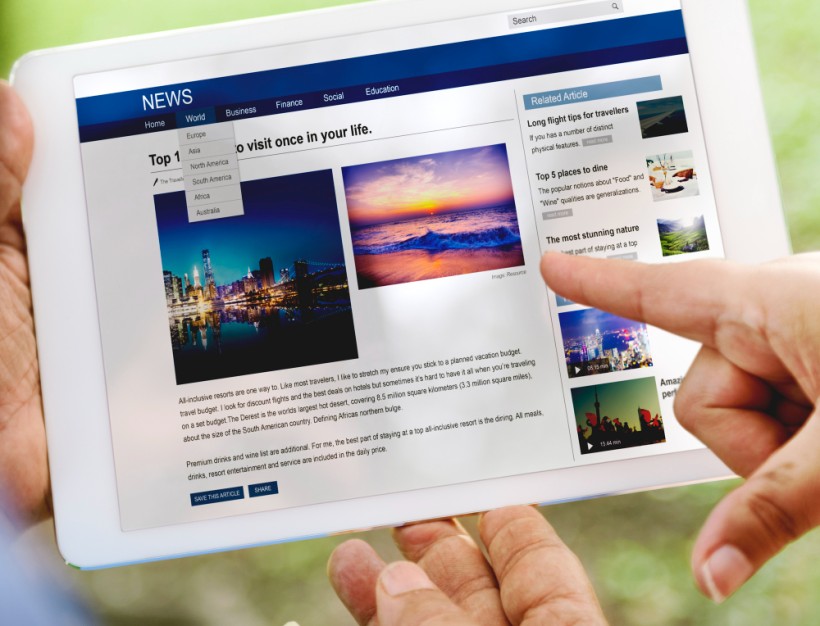If you want to improve your website’s SEO and user experience, internal linking is one of the most powerful yet overlooked strategies.
Internal links connect pages within your site, helping users navigate easily while also signaling to search engines which pages are important.
But many site owners either don’t use internal links enough—or they overdo it in ways that hurt rather than help. So how do you get internal linking right?
In this guide, I’ll break it down step by step, covering best practices, common mistakes, and tools to help you optimize your internal linking strategy for better rankings and user engagement.
Internal Links and Their Role in SEO
What Are Internal Links?
Internal links are hyperlinks that point to another page on the same website.
Internal links do two things:
✅ They help users find what they need, and
✅ They help search engines understand your site.
Why Do Internal Links Matter for SEO?
When Google crawls your website, it follows links to discover new pages. If a page has no internal links pointing to it, it’s basically invisible.
That’s why a strong internal linking strategy ensures all your important content gets indexed and ranked.
But internal links do more than just help with discovery. They also distribute link equity (sometimes called “link juice”).
When a high-authority page links to another page on your site, some of that authority or link value is passed along. This helps boost rankings for pages that might not have many external backlinks.
For example, imagine you have a blog post that ranks well for a competitive keyword (like ‘internal linking’).
By linking from that post to a related but lower-ranking page, like say, ‘link building’, you give the second page a better chance of ranking higher in search results.
Another major benefit? Internal linking improves user experience.
When visitors can easily navigate between relevant pages, they stay on your site longer.
This lowers bounce rates and increases engagement—two factors that search engines take into account when ranking sites. (Here are 18 other SEO ranking factors to track.)
The bottom line: internal linking isn’t just an SEO trick. It’s a way to make your site more useful, more discoverable, and more authoritative.
Real-World Example
Ever wondered why Wikipedia dominates Google searches? One reason is its strong internal linking.
Every page links to multiple related topics, making it easy for users and search engines to navigate.
The result? Higher rankings and better user engagement.
Types of Internal Links and When to Use Them
Not all internal links serve the same purpose.
Some are designed to help users navigate your site, while others guide search engines toward your most important content.
Here are the main types and when to use them:
1. Contextual Links
Contextual internal links are links placed within the body of a page or article. They help users find related content and signal to search engines how different pages connect.
Best used for: Blog posts, guides, and educational content.
Example: If you’re writing about keyword research, linking to a detailed guide on SEO tools makes sense.
2. Navigational Links
A navigational link is one found in menus, footers, and sidebars. They help users move between key sections of your site.
Best used for: Homepage navigation, category pages, and product/service pages.
Example: Your site’s header links can point to service and contact pages. Always include a navigation link or two as an internal linking best practice.
3. Hierarchical Links (Breadcrumbs)
Breadcrumbs show users the path they took to arrive at a specific page. They improve user experience and help search engines understand your site structure.
Best used for: E-commerce and content-heavy websites.
Example: Home > Blog > SEO > Internal Linking Best Practices.
4. Footer and Sidebar Links
These links appear on every page and direct users to essential content like policies, contact pages, or popular resources.
Best used for: Site-wide accessibility.
Example: Footer links to your “Privacy Policy” or “Terms of Service”.
Each type of internal link plays a role in shaping your site’s usability and SEO.
A balanced approach—one that serves both users and search engines—will help your website perform better in search results while improving the overall experience for visitors.
Internal Linking vs. External Linking: Key Differences
Internal and external links both play a role in SEO, but they serve different purposes in link building.
An internal link keeps users on your site, guiding them to relevant pages and helping search engines understand site structure.
An external link, on the other hand, points to other websites and adds credibility to your content.
The key difference is control.
You decide how to structure internal links, influencing which pages get authority and visibility.
External links are out of your hands, but linking to reputable sources can still boost your credibility.
A strong SEO strategy uses both effectively, ensuring a site is both well-structured and connected to authoritative external sources.
Developing an Effective Internal Linking Strategy
A strong internal linking strategy isn’t about adding links randomly—it’s about building a structure that makes sense for both users and search engines.
Here’s how to do it right:
1. Identify Your Cornerstone Content
Start by figuring out which pages matter most. These are the pages you want to rank highest—your ultimate guides, main service pages, or key product categories. Make sure other relevant pages link to them.
2. Use Topic Clusters
Instead of linking things randomly, group content into logical clusters.
A pillar page should serve as the hub, with sub-pages linking back to it. This tells Google which pages are related and strengthens your authority on that topic.
For example, a fitness blog’s main “Weight Loss” page could link to subtopics like “Best Cardio Workouts” and “Low-Calorie Meal Plans.”
On our own website, we have a ‘white paper’ cluster that includes our:
→ white paper writing guide
→ white paper pricing guide, and
→ white paper table of contents guide.
3. Keep Your Site Structure Shallow
Users (and search engines) should be able to reach any page within three clicks from the homepage. Deep, hard-to-find pages often get ignored, leading to lower rankings.
4. Use Descriptive Anchor Text
Avoid vague phrases like “click here.” Instead, use keywords that describe what the linked page is about (called an ‘anchor tag’).
This helps both users and search engines understand the content of the destination page.
A well-planned internal linking strategy makes your site easier to navigate, improves SEO (see what I did there?), and helps important pages rank higher.
5. Ensure dofollow Links
Most internal links should be dofollow so search engines can crawl and pass authority to the linked pages.
Dofollow vs. Nofollow vs. Noindex: What’s the difference?
Dofollow links: These are the default for most internal links. A dofollow link allows search engines to follow the link, helping to pass link equity and improve rankings.
Nofollow links: Adding rel=”nofollow” tells search engines not to pass authority to the linked page. A nofollow link is useful for pages like user-generated content, paid links, or affiliate links.
Noindex pages: Adding meta name=”robots” content=”noindex” prevents a page from appearing in search results. Noindex is useful for pages that don’t need to rank, such as login pages, thank-you pages, or private content.
Use dofollow links by default, and only apply nofollow or noindex when necessary to control how search engines interact with specific pages.
6. Keep It Natural
Don’t force internal links where they don’t make sense.
Every link should feel natural and serve a purpose—whether it’s guiding users to relevant content or helping search engines understand relationships between related pages.
If a link doesn’t add value, leave it out.
7. Regularly audit for broken links or orphaned pages
Broken internal links hurt both SEO and user experience. Regularly scan your site for any broken link and fix it ASAP.
Orphan pages—pages with no internal link pointing to them—are equally problematic. If search engines can’t find them, they won’t rank.
Make sure every important page is linked to from at least one other relevant page.
8 Develop a sense for internal linking opportunities
Building a habit of internal link building starts with shifting how you think about content.
Instead of treating each post or page as a standalone piece, consider how it connects to the rest of your website.
Every time you write, ask yourself:
What related topics have I already covered? Link to a different page or related posts that provide more depth.
What supporting content could I create? If a topic deserves further exploration, plan future posts and link to each web page once published.
What’s my user’s next step? Guide readers logically from one web page to another to keep them engaged.
One way to reinforce this habit is to keep an internal linking checklist. Before publishing any new content, review it for any internal link opportunity.
Over time, this becomes second nature, ensuring your site stays well-connected and easy to navigate—and building page authority as you go along.
By consistently thinking about your internal linking structure while creating content, you naturally build a stronger site architecture that benefits both users and search engines.
It’s one of my favorite parts of writing for our blog.
Common Mistakes to Avoid
Even with the best intentions, many websites make critical internal linking mistakes that hurt their SEO and user experience.
Here are the most common ones and how to avoid them:
1. Overloading Pages with Too Many Links
Google recommends keeping the number of links on a page reasonable. If a page is cluttered with excessive links, it dilutes their value and confuses both users and search engines.
2. Using Generic Anchor Text
Avoid vague phrases like “click here” or “learn more.” Instead, use descriptive anchor text that tells users and search engines what the linked page is about.
3. Ignoring Mobile Usability
If your internal links are too close together or difficult to tap on mobile, they create a frustrating user experience. Make sure your links are mobile-friendly.
4. Creating Deep or Hard-to-Find Pages
If a page takes too many clicks to reach, search engines may not index it properly. Keep your site structure shallow so important content is always within three clicks of the homepage.
5. Forgetting to Update Links
As your site grows, pages get deleted or moved. Regularly check for and fix broken links to keep your site running smoothly.
Avoiding these mistakes ensures that your internal links strengthen your site’s SEO rather than weaken it.
Tools for Analyzing and Optimizing Internal Links
Having the right tools makes internal link optimization easier. Here are some of the best ones:
1. Google Search Console
✅ Helps you track how Google sees your internal links.
✅ Shows which pages have the most and least internal links.
✅ Identifies crawling issues and errors.
2. Screaming Frog
✅ A website crawler that finds broken links and orphan pages.
✅ Helps map out your site structure and internal linking patterns.
✅ Exports site audit reports for further analysis.
3. Ahrefs & SEMrush
✅ Both tools analyze internal link distribution and link equity.
✅ Show how well-linked pages perform in search results.
✅ Help uncover opportunities for better internal linking.
4. Link Whisper (for WordPress users)
✅ Suggests relevant internal links as you write content.
✅ Automates internal linking suggestions to save time.
Regularly auditing internal links with these tools helps you fix weak spots, optimize link flow, and ensure search engines and users navigate your site effectively.
Measuring the Impact of Your Internal Linking Strategy
A good internal linking strategy isn’t just about implementation—it’s about measuring the results and making improvements.
Here’s how to track performance:
1. Monitor Organic Traffic
Check if pages receiving new internal links see an increase in organic traffic. Google Analytics can show whether these pages are gaining more visibility.
2. Track Page Rankings
Use SEO tools like Ahrefs or SEMrush to monitor how internal links impact your rankings. If a page is rising in search results, your linking strategy is working.
3. Analyze User Behavior
Look at bounce rates and session duration. Are users staying on your site longer? Are they clicking through multiple pages? If engagement improves, your links are guiding them effectively.
4. Check Internal Link Reports
Google Search Console provides data on internal link distribution. If important pages have too few links, adjust your strategy to balance link flow.
5. Audit and Optimize Regularly
SEO is never set-it-and-forget-it. Conduct routine audits to remove broken links, update outdated ones, and ensure your most valuable pages get the internal link support they need.
Final Thoughts on Internal Linking
Internal linking is one of the most effective ways to improve SEO and user experience, yet it’s often overlooked or misused.
A well-structured internal linking strategy helps search engines understand your site, distributes authority across important pages, and keeps users engaged longer.
Quick Action Plan:
- Audit your internal links – Use Google Search Console or Screaming Frog to identify broken links and orphan pages.
- Strengthen cornerstone content – Ensure your most valuable pages have sufficient internal links pointing to them.
- Use topic clusters – Group related content under pillar pages and link them strategically.
- Optimize anchor text – Use descriptive, keyword-rich phrases instead of generic terms like “click here.”
- Fix broken links regularly – Run routine link audits to maintain a clean, user-friendly structure.
A strong internal linking strategy can drive real results—but if you need expert help optimizing your site’s SEO, check out our SEO content services to take your content and rankings to the next level.
Mo is the founder and CEO of Column, helping leaders shape public opinion through content and research. Connect with him on LinkedIn.





